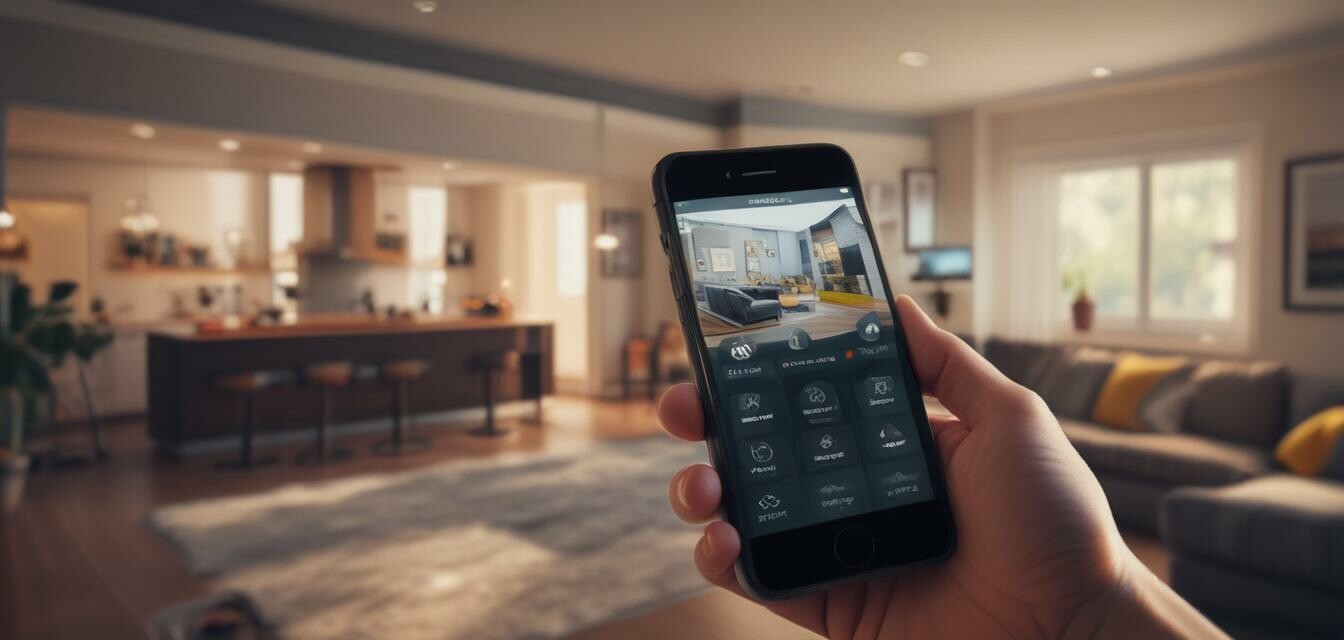
Preparing for Emergencies: Using Smart Tech
Key Takeaways
- Smart home technology enhances emergency preparedness.
- Alerts from devices can save crucial time during emergencies.
- Integrating various devices creates a comprehensive safety net.
- Routine checks and maintenance are essential for device effectiveness.
In today’s world, emergency preparedness is more critical than ever. With the rise of smart home technology, homeowners have a unique opportunity to leverage various devices to ensure their family's safety during emergencies. This guide will explore how you can effectively use smart tech to prepare for unexpected situations, from alerts to the usage of different devices in a coordinated manner.
Understanding Smart Home Technology
Smart home technology involves a network of devices connected to the internet, allowing for remote control and automation of systems throughout your home. This can include everything from smart cameras to alarm systems and motion sensors. Understanding how these technologies work is essential for preparing for emergencies.
Key Components of Smart Home Technology
| Device | Function |
|---|---|
| Smart Cameras | Provide real-time video monitoring and alerts. |
| Motion Sensors | Detect movement and trigger alarms. |
| Smart Locks | Allow for secure entry and exit, even when away from home. |
| Alarm Systems | Notify homeowners of any security breaches. |
| Smart Speakers | Serve as central command for voice-activated alerts and controls. |
Preparing Your Home for Emergencies
Preparation is key to navigating emergencies effectively. Here’s how you can use smart technology in your emergency plan:
1. Set Up Alerts
One of the biggest advantages of smart devices is their ability to send real-time alerts to your smartphone. Ensure that all your devices are set up to notify you in case of emergencies. This includes:
- Security breaches from smart cameras or alarms.
- Smoke or carbon monoxide alerts from smart sensors.
- Water leak alerts from smart water sensors.
2. Automate Emergency Responses
Integrate your devices to automate responses. For example, if a motion sensor detects entry during designated “away” hours, your smart camera can begin recording automatically and send an alert. Consider the following automation options:
- Automatically locking doors when you leave the house.
- Turning on lights when motion is detected at night.
- Having your smart speaker announce emergency instructions.
3. Regular Device Maintenance
Routine maintenance of your smart devices is crucial for their functionality. Regularly check batteries, update software, and ensure that all sensors and cameras are working properly. Here’s a simple checklist to follow:
- Test all alarms monthly.
- Clean camera lenses for obstructed views.
- Ensure that your smart locks are functioning smoothly.
Creating a Comprehensive Emergency Plan
An effective emergency plan combines technology with human action. Include family members in your plans, ensuring that everyone knows the emergency procedures and how to respond when alerts come in. Make sure to cover the following in your plan:
- Communication methods in case of an emergency.
- Designated meeting points.
- Who will handle evacuations if necessary.
Training and Drills
Once you have your technology and emergency plan in place, conduct drills with your family. Practice scenarios where technology plays a crucial role in responding to different emergencies. Training will build confidence and ensure everyone knows their role in a crisis.
Using Smart Technology During Emergencies
In the event of an emergency, smart technology can provide assistance and support. Here's how:
- Monitor your home through smart cameras remotely.
- Utilize smart speakers for real-time information updates.
- Employ smart locks for quick evacuations without the need for keys.
Best Practices for Using Smart Technology in Emergencies
Implementing best practices can significantly enhance your emergency preparedness:
Tips for beginners
- Always read the user manual for each smart device.
- Keep your device software updated for improved functionality.
- Integrate devices from the same brand for better compatibility.
Conclusion
Preparing for emergencies is about how well you can respond when the time comes. Smart home technology offers invaluable tools for ensuring safety and security for you and your loved ones. By leveraging alerts, automation, and consistent maintenance of your devices, you can significantly ease the burden during challenging times. To further explore enhancing your security, check our other articles on Tips & Best Practices and discover more about Alarm Systems and Home Security Systems to protect your home effectively.
Pros
- Increased awareness and alerts during emergencies.
- Ability to automate safety responses.
- Convenience of remote monitoring.
- Peace of mind for homeowners.
Cons
- Dependency on technology that could fail.
- Potential privacy concerns with surveillance.
- Initial setup might be overwhelming for some.
